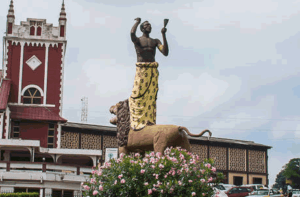Ashanti Region tops Violent Incidents Chart in June, July monitoring exercise
 The Ashanti Region recorded the highest number of violent incidences in the Foundation for Security and Development in Africa (FOSDA) Violent Incidents Chart for the June-July 2022 Monitoring Exercise in Ghana.
The Ashanti Region recorded the highest number of violent incidences in the Foundation for Security and Development in Africa (FOSDA) Violent Incidents Chart for the June-July 2022 Monitoring Exercise in Ghana.
The report, which FOSDA made available to the Ghana News Agency, indicated that out of a total 86 cases recorded within June 01 to July 31, 2022, the Ashanti Region topped the list with 24 incidents, representing 28 per cent of the total incidents.
It said next was the Greater Accra Region with 21 incidents, representing 24 per cent of the total cases recorded.
However, the Bono Region was the most peaceful in Ghana within the period under review with no violent case recorded.
The FOSDA exercise is a media-based monitoring that focuses on six types of broad-based violence – physical (including gun violence), political, social, economic, sexual and psychological violence and places where they occur.
The target sources of monitoring are mainly the most sought-after online media news outlets, which is completed by reportage in the print media.
The monitoring offers an opportunity for analysis, mapping and policy options on these incidents as they impact human security with the ultimate intent to call on key stakeholders to act.
Out of the 86 recorded cases within the review period, 167 injuries and 41 deaths occurred in the regions under monitoring where 10 per cent of the dead were women.
It said physical violence, including assault, also topped the list of violent incidents with 49 cases, representing 57 per cent of the total, whiles gun related violence followed with 15 cases, representing 17 per cent.
The data emanates from the monitoring of 10 major media outlets in Ghana, covering both online and newspaper sources.
The overall breakdown indicates; physical violence – 49, (57 per cent), gun violence – 15 (17 per cent), sexual violence – 12 (14 per cent), psychological violence – four (five per cent), social violence – three (four per cent), economic – two (two per cent) and political – one (one per cent).
Source: GNA
